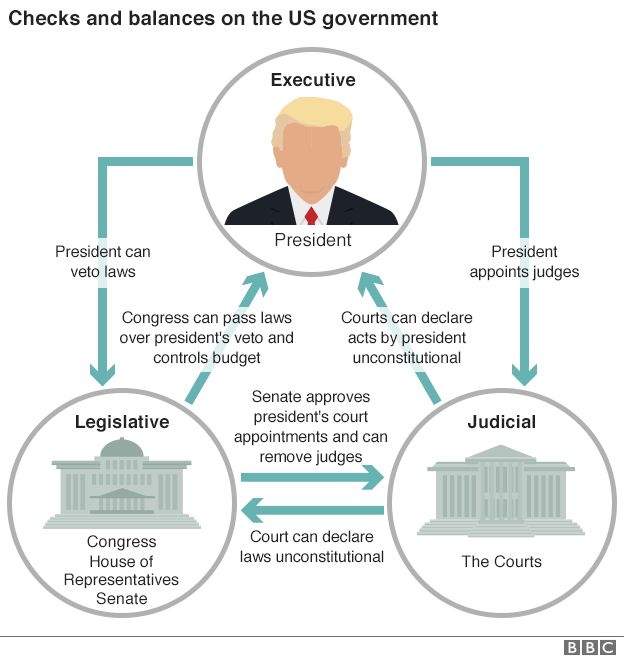
How Does The Executive Branch Check The Judicial Branch. The legislative congressional executive and judicial constraints all serve as checks on the bureaucracy but agencies can still establish powerful alliances. Iron triangles or subgovernments are coalitions created by the unification of an agency the congressional. How does the executive branch check the judicial branches. The executive branch can declare Executive Orders which are like proclamations that carry the force of law but the judicial branch can declare those acts unconstitutional.

Judicial Branch checks Executive Branch Supreme Court may declare an action by the President as unconstitutional Chief Justice of the Supreme Court serves as the judge in. Grant pardons make treaties veto or sign bills enforce laws act as Commander-in-Chief during war recognize foreign countries nominate judges and cabinet members. Powers of the Executive branch. The President in the executive branch can veto a law but the legislative branch can override that veto with enough votes. The executive branch can check over the judicial branch by simply looking at the appointment of federal judges and justices for the judicial. The legislative branch can check the executive branch by rejecting the Presidents veto of a legislative action.
Regarding this how does executive check judicial.
The President in the executive branch can veto a law but the legislative branch can override that veto with enough votes. This is known as an override. This helps extend the Presidents influence over the judiciary by. The executive branch can declare Executive Orders which are like proclamations that carry the force of law but the judicial branch can declare those acts unconstitutional. The legislative branch can check the executive branch by rejecting the Presidents veto of a legislative action. Interpret laws passed by Congress review presidential actions.